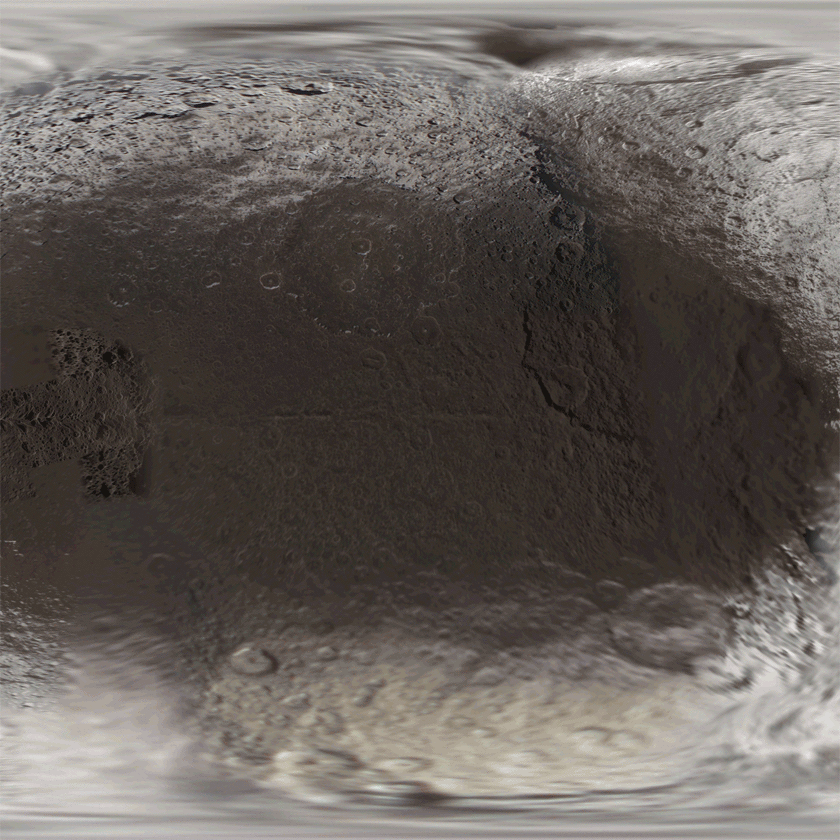Emily Lakdawalla • Dec 21, 2011
More radar images of icy moons from Cassini: Iapetus, Enceladus, and Rhea
When I posted about the really cool Cassini SAR images of Enceladus a few weeks ago, I initially wrote that this was the first-ever SAR image of an icy moon other than Titan. Several people (some readers and two members of the Cassini science team!) corrected that statement: Cassini has performed SAR imaging of other icy moons (including Enceladus) before, though none had the resolution of the November 6, 2011 Enceladus swath. If you're not sure what SAR imaging is, it stands for Synthetic Aperture Radar, and it is a method of bouncing radio waves off a planetary surface and analyzing the timing and frequencies of their echoes to produce images. It's a method that is most often used for worlds with cloudy or hazy atmospheres, like Venus, Earth, and Titan, because the clouds are transparent to radio waves. But Cassini has been employing the imaging method to good effect on other worlds, and I'll show you those neat images in this post.
Bob Pappalardo sent me a paper published last year in Icarus that covers all kinds of radio data that Cassini has acquired on Saturn's icy moons. It's a special paper, he said, because it is the last paper published by radar scientist Steve Ostro; in fact, the paper was submitted posthumously. Bob said he considers the Enceladus swath the "Ostro memorial observation." Ostro is keenly missed by the radar science and Cassini communities.
I'm afraid I find the paper a bit difficult to wrap my head around, but here's what I can summarize from it. For all the larger moons except Hyperion, there is a very strong correlation between the brightness of the surface as seen by the RADAR instrument and the brightness of the surface as seen by the cameras and spectrometers. By contrast, when Arecibo's giant radar dish observes these moons, there's no such correlation. These and other measurements and some "if-this-then-that" statements led Ostro and his coauthors to conclude that Iapetus' radar properties can be explained by there being ammonia present in its surface, with higher concentrations as you go downward. The exception of Hyperion is interesting -- in radar it's much brighter than you would expect. They suggest that Hyperion's dark coloration is only at the uppermost surface, beneath which it's nearly pure ice.
With some help from Jason Perry, here is the SAR image of Iapetus, and then an animation that blinks back and forth between the SAR image and a composite map of photos. I'm not going try to explain the comparison between the two, because I'm not confident of the science -- instead, I invite you to watch the animation blink back and forth, and note what's similar and what's different. Enjoy!


And thanks to Daniel Macháček for pointing out where I could download these Rhea and Enceladus observations.


Support our core enterprises
Your support powers our mission to explore worlds, find life, and defend Earth. You make all the difference when you make a gift. Give today!
Donate

 Explore Worlds
Explore Worlds Find Life
Find Life Defend Earth
Defend Earth

